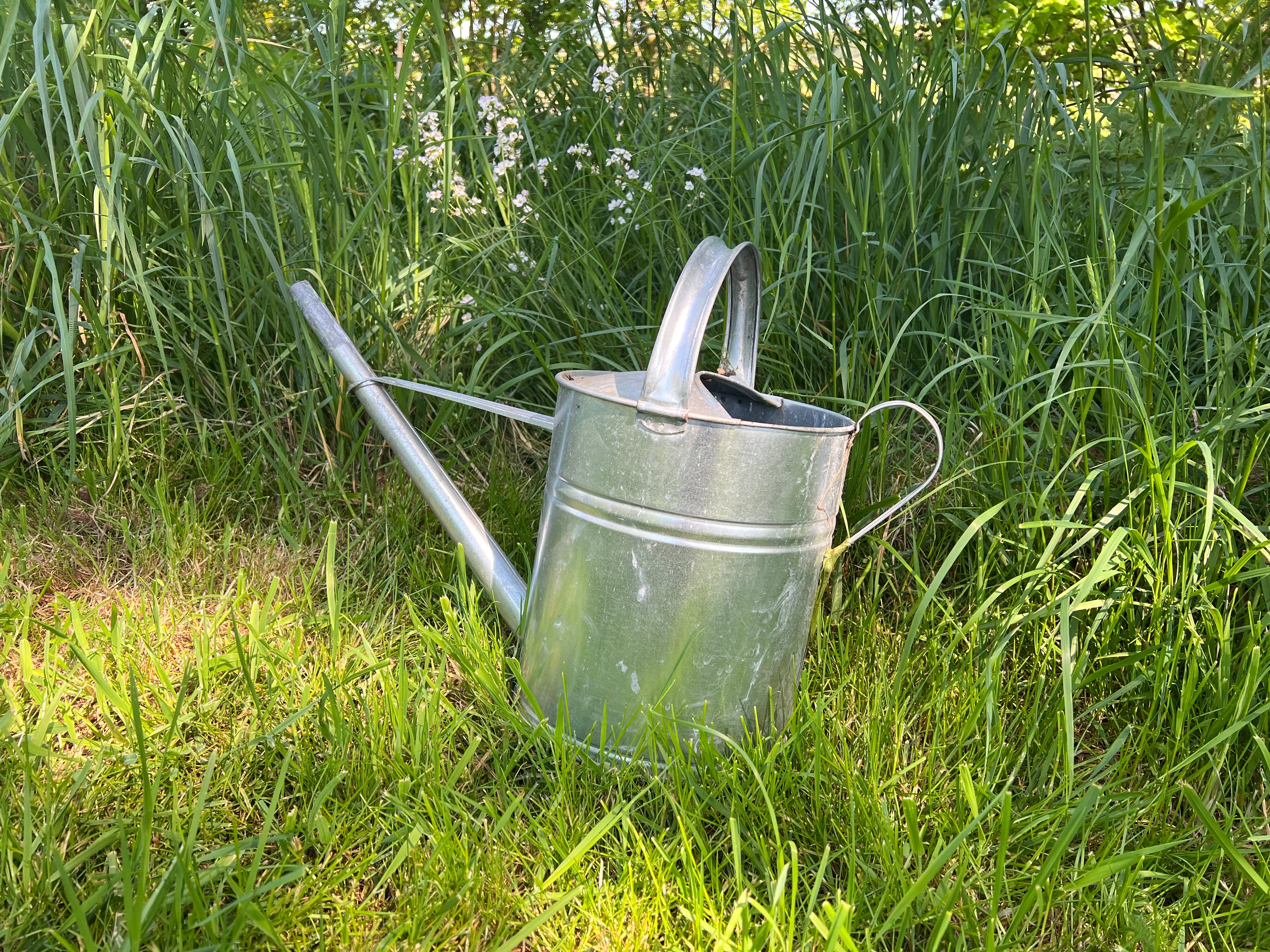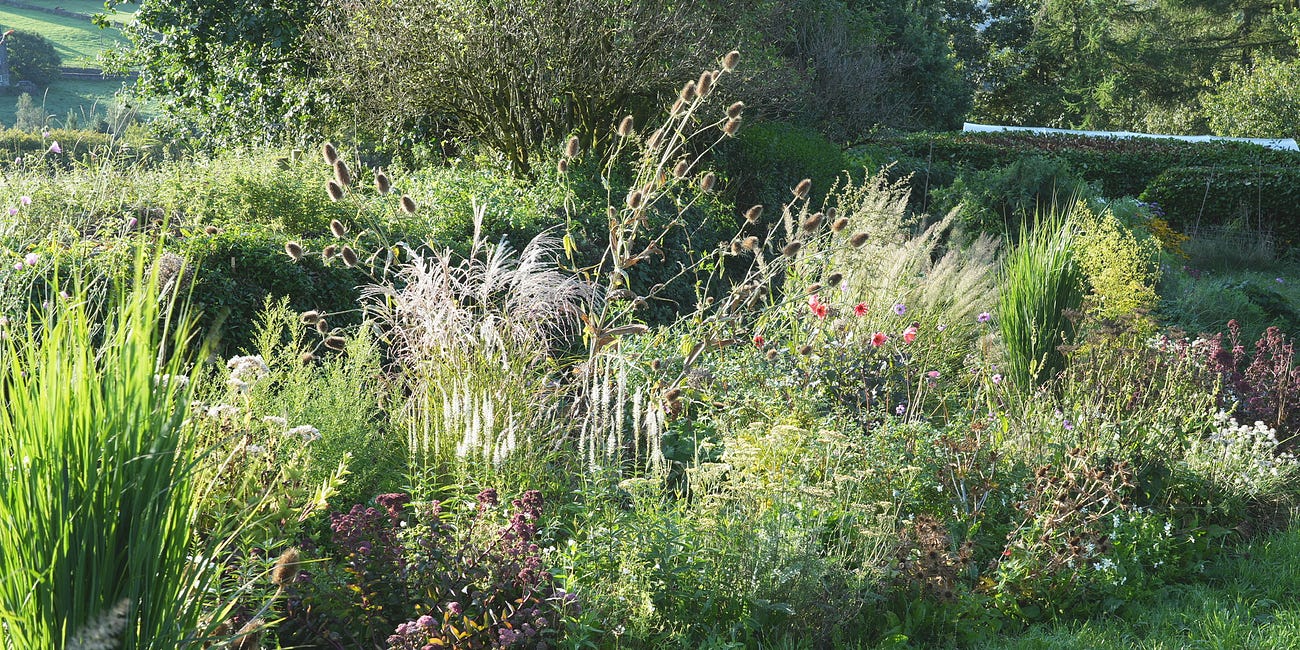Gardening in drought
Emergency tips for the continued dry spell
It’s been the driest spring in years and although our gardens and wildlife have been flourishing, there is no rain in sight and plants are starting to look stressed. With summer on the way, it’s time to get water wise...
1) Don’t water established plants
Concentrate any watering on new plantings and those in pots. New plants won’t have had time to grow deep roots and pots have limited compost for moisture retention. Most plants in the ground will be resilient to drought, even if they look like they are wilting or actually really are dying back. Much like dying back in winter, many established perennials can tolerate dying back in summer too.
2) Observe plants that thrive or survive
With our climate changed, unpredictable extremes are now expected every year. We have to adapt what we grow to cope with long periods of drought in summer and wetter winters. This really puts plants through their paces, take the opportunity to resist the hose and observe which plants either thrive in the dry, or do dieback only to bounce into life again when it rains - the survivors. If they can thrive or survive a drought now, they will be useful plants for droughts in the future. Saving you time, water and effort!
3) Ditch the plants that don’t survive
This may sound harsh, but if you have a plant that sulks every time it gets dry in summer, or struggles, it’s probably time to compost it and try something new. Gardening should be enjoyable, not a chore, save yourself a job and remove the sulky thirsty plants that need lots of watering. Unless they’re really important for wildlife, of course! Most garden plants have suitable alternatives.
4) Pause planting
While plants in the ground need less watering, you might want to hold off planting new stuff, especially smaller plants and seeds, until we have a good amount of rain on the way. You might find that the new plants still need watering for a couple of months until their roots establish - which could be easier if kept in pots in the shade for now (see 6 below).
5) Wilt check
In the middle of the day when the sun is the hottest, many plants wilt as a natural defence mechanism. This can be misleading because it looks like the plant needs water when it’s actually fine - check again in the evening, or better, early morning. If the plant is still wilting, yes it might need water. If it’s looking perky and fine, leave it.
6) Move seedlings and plants in pots to shade
I’ve begun moving some of our seedlings into shaded areas or part shaded areas, including moving some seedlings out of the polytunnel onto a part-shaded bench outside during this hot spell. Seedlings and plants in pots still need some sunlight to grow well (unless they are shade lovers like ferns and hostas) but on bright weeks, they’ll be happy with some hours of shade too. This will prevent the plant and pot from overheating and using up more water through transpiration and evaporation.
7) Collect waste water
Can you easily collect waste washing up water? I have detached our kitchen waste water pipe outside and aimed it into a watering can. It’s not ideal because I garden organically, though we do only use natural washing up liquid. But in times of drought, sometimes imperfect is better than nothing. I use this water for any new ornamental plants or seedlings, trying to avoid using it on edibles unless I really need to. What remains of our stored rain water is saved for the edible plants if they need it.
8) Leave water for wildlife
A dish on the ground for hedgehogs, a dish higher up for birds. Insects will find and use both. Wash them daily if you can, to keep free of dirt and disease. Wildlife had been having a good spring, recovering from a dismal 2024, let’s help now too.
9) Water less often, water deep
Key to watering is less often and deeper, encouraging roots to go deep down into the ground. Practically this means watering say, every week but with a good soak, try to imagine if the water is running down beneath the plant’s roots - there is no magic formula, you have to use your judgement as conditions are different in every garden. Better watering judgement only comes from practice. For pots, aim to soak all of the compost, while avoiding lots pouring out of the bottom.
10) Sit pots in trays
One of the best ways to water seedlings and other pot plants is to sit them in trays to either catch water running out the bottom, or to soak them from below. This minimises waste from water pouring onto the floor. At this time of year, I’m scrabbling for more trays!
11) Create a dish of soil to avoid water runoff
For plants in the ground that do need watering, such as newly planted tomatoes, courgettes or other veg, create a shallow ridge of soil around the plant base roughly the size of a large plate. This will let you water into the dish, preventing the water from running away from the plant. Instead, it will soak directly down to the roots.
12) Mulching can retain moisture
Where you’ve just watered, if you have excess compost, you could add a 3-5cm layer on top of the freshly soaked soil. This will help lock the moisture in for the foreseeable. Useful for newly planted shrubs and perennials as we hit the hottest, driest weather.
Our fluctuating weather is a constant learning curve for everyone. In winter I emptied all of our rain water tanks to clean them and repair their bases, assuming it would rain again to fill them - it hasn’t! And we’re on a natural spring, not mains water, which itself is running dry. Nightmare!
So I’m really focussed on water conservation right now to somehow get our polytunnel full of seedlings through the drought. I won’t be able to plant most of them out until it rains again, we simply don’t have enough water.
In the ornamental wildlife garden, nothing gets watered unless it’s just been planted, it will be survival of the fittest.
p.s. some people are recommending growing plants in gravel and sand as a solution to dry summers but I believe this is misguided advice - it’s fine to have small areas of gravel and sand of course, but on a large scale or full garden, it’s simply creating a bigger problem. I explain why here…
10 Concerns about planting in gravel gardens and other aggregates
In previous newsletter articles Changing soil composition = bad (2021) and 7 predictions for 2023 I shared my concerns about the trend for covering entire garden planting areas with aggregates. I thought it was worth expanding on these concerns as a discussion point because the trend is building steam and that worries me for the potential harm it may cause. This is more to share my concerns to discuss with you all than a ‘these are the facts’ article and it’s definitely not saying we cannot use gravel at all, so please take it in that light.





Great tips, I’m in south wales where prolonged dry spells like this are very unusual! We had some heavy downpours around Easter (which filled up the water butts) but nothing since. No rain today despite thunderstorm warning. My water saving tip is a bucket in the shower mostly to catch water you run whilst waiting for it to warm up! We’re lucky enough to have a porch with waterbutt below the upstairs window so can just chuck it out onto the roof - so easy!
I put a layer of mulch on my beds to protect the soil surface from drying out. We have hens so have plenty of waste bedding (mainly straw infused with chicken poop) which I use for this purpose. I discovered using by accident when using it as top layer compost in my greenhouse in a no dig manner because I’d run out of the homemade compost. Lifted a bit of the straw and it was lovely and moist underneath. Been using it for this purpose ever since!